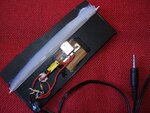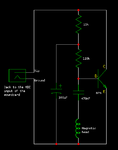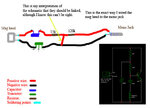Andronikov
Newbie level 3



I am working on a project for school show and tell, I found a really cool project that I want to build, it's a magnetic stripe reader made from a mono cassette players magnetic head and uses sound, so there is an amplifer that I am trying to build that will amplify the sound enough to get a reading, so we can scan all our student id's, and I just started getting into electronics, I really love this new world but I'm so lost when reading schematics so if anyone can please help me!! I already have the schematics of different types, then I drew a picture representing how I inturpreted the schematic (how I connected all the wires) there are two pictures here of other peoples designs, I just need something simular to that, I want to be able to make this portable so I can connect in the jack to handheld recorder, then plug in the recorder and remove the sound file from it on the computer and get the information that way, instead of just plugging it into the sound card on a computer, because I dont have a laptop to plug into so I will just take it over to the teachers computer to remove the files and show everyone how it read.
**broken link removed**
http://obrazki.elektroda.pl/57_1306152784.png
http://obrazki.elektroda.pl/40_1306152784.jpg
http://obrazki.elektroda.pl/62_1306152784.jpg
http://obrazki.elektroda.pl/55_1306152784.jpg